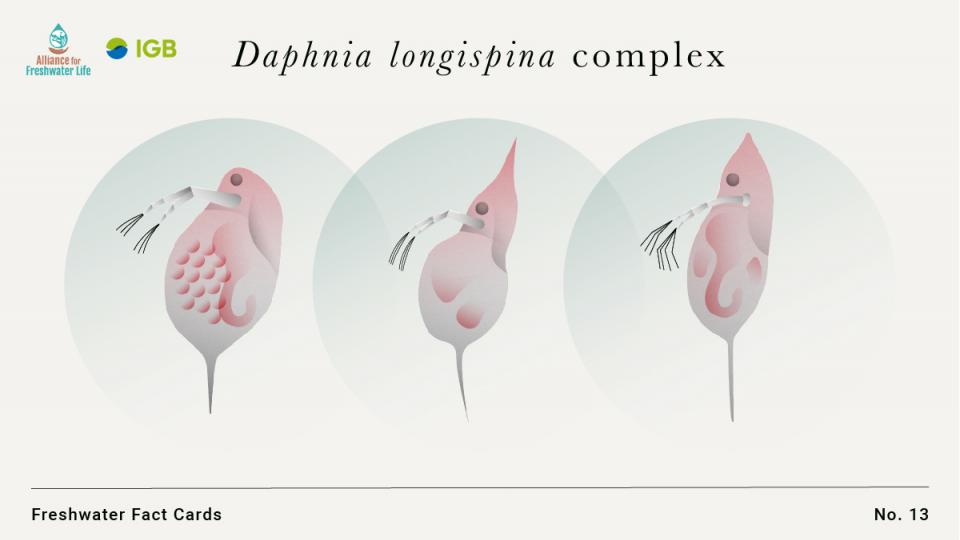
- Daphnia longispina is a species complex containing several common water flea species.
- They live in various standing freshwater bodies, including ephemeral rock pools, small ponds, and large and deep lakes.
- Various forms (morphs) exist under different environmental conditions.
- Even genetically identical individuals may exhibit different morphological characteristics.
- Several species of the group frequently form interspecific hybrids.
- Hybrids may advantageously combine parental traits.
- They show inducible defences to predators, including conspicuous helmets, spines, crests or neckteeth.
- They use flattened leaf-like legs to produce water currents to help gather food.
- In nature, they are frequently infected by various parasite species. Thus, they have been widely used to study host-parasite interactions.

Adults range from 1-3 mm in length. Adult females produce eggs every 3-4 days. They feed on small, suspended particles including algae and bacteria. They are an important trophic link between algae and fish in lakes.

Daphnia longispina is a species complex containing several common water flea species. They use flattened leaf-like legs to produce water currents to help gather food. Various forms (morphs) exist under different environmental conditions.







